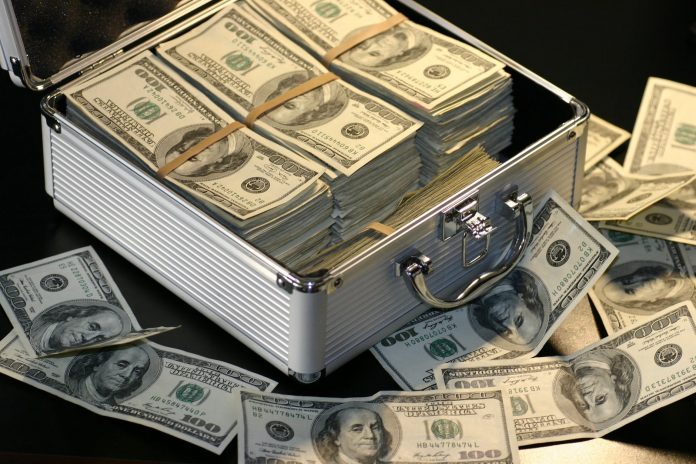
TOKYO: The dollar sagged on Thursday as the pound led a bounce in European currencies, although skittish emerging market currencies and global trade concerns limited the greenback’s losses.
The Australian dollar also dipped, failing to draw support from slightly better-than-expected domestic trade data.
The catalyst behind the dollar’s fall was the pound, which spiked after Bloomberg reported on Wednesday that the United Kingdom and Germany were prepared to drop a key sticking point in Brexit negotiations.
The dollar index against a basket of six major currencies stood at 95.009, down 0.2 percent. It shed nearly 0.3 percent overnight, nudging away from a two-week high.
Sterling added 0.1 percent to $1.2922 after rising 0.4 percent the previous day.
The British currency’s rise also helped the euro, which gained about 0.45 percent on Wednesday. The single currency last traded little at $1.1647 for a gain of 0.15 percent.
Against the Swiss currency, the greenback lost 0.2 percent to 0.9699 franc per dollar. The dollar shed 0.2 percent to 111.31 yen.
The dollar may have pulled back, but it was expected to stay well supported in the longer term, continuing to garner safe-haven bids in the wake of weakness in emerging market currencies.
The MSCI EM Currency Index slipped to its lowest since May 2017 on Wednesday.
A public comment period on the possibility of fresh U.S. tariffs on another $200 billion of Chinese goods ends on Thursday, stoking fears of a major escalation in the Sino-U.S. trade dispute.
Emerging market currencies have been hit by fears that the global trade conflict would negatively affect their export-oriented economies.
Argentina’s peso, which has lost more than 50 percent of its value this year, saw a rare pause in losses overnight.
Helping install a bit of investor confidence, Argentine Economy Minister Nicolas Dujovne said on Tuesday he believed a deal to release early disbursements from a $50 billion standby loan agreement with the IMF could be put to its board by the end of the month.
The Argentine peso closed up more than 1 percent at 38.52 per dollar on Wednesday.
Elsewhere, the Australian dollar was 0.15 percent lower at $0.7185.
As with the previous day, when strong gross domestic product data did not provide much of a lift, Thursday’s economic indicators were unable to prop up the Aussie.
Australia’s trade surplus in July was A$1.551 billion, above economists’ forecasts of around A$1.4 billion, data on Thursday showed.
The Australian dollar remained in reach of $0.7145, its lowest since May 2016 plumbed the previous day. The currency, considered a barometer of broader risk sentiment, has taken heavy hits from recent turmoil in the emerging markets.
An uncertain economic outlook for China, Australia’s key trading partner, has also weighed on the Aussie, which has declined about 8 percent so far in 2018.
China’s yuan was a shade weaker at 6.8364 per dollar in onshore trade after gaining 0.25 percent on Wednesday.






